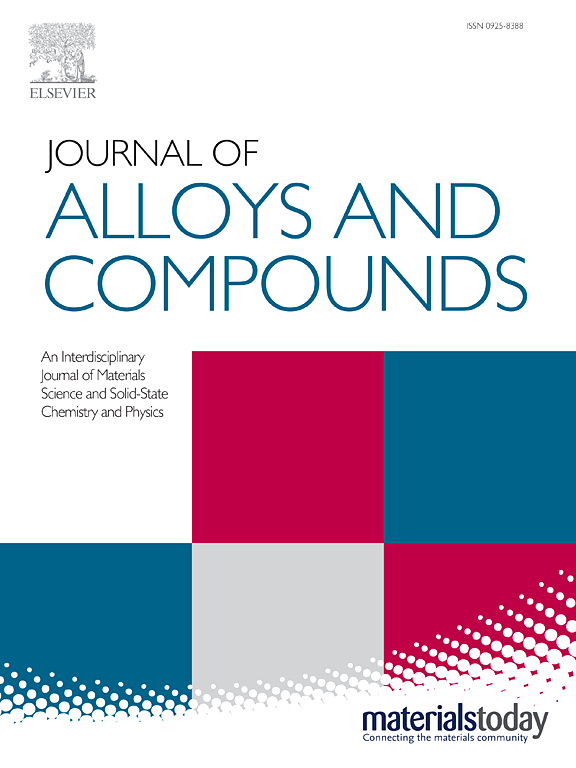Flower-Sphere CoNiCuMnFe/C High-Entropy Alloy Catalysts for Enhanced Oxygen Evolution Reaction Kinetics
IF 5.8
2区 材料科学
Q2 CHEMISTRY, PHYSICAL
引用次数: 0
Abstract
The sluggish kinetics of the oxygen evolution reaction (OER) remain a significant bottleneck in the development of anodic water electrolysis technologies. High-entropy alloys (HEAs) have emerged as promising candidate catalysts for OER due to their versatile composition, which allows for the fine-tuning of electronic structures and catalytic active sites. In this study, we synthesize a flower-sphere-like HEA/C electrocatalyst via a molten salt method, with compositional control of CoNiCuMnM [M = IIA, I-IXB, and VIII (s, d2-d10)]. Among the compositions evaluated, CoNiCuMnFe/C exhibits superior catalytic performance, achieving an overpotential of 350 mV at 10 mA cm⁻² and a Tafel slope as low as 79 mV dec⁻¹. Density functional theory (DFT) calculations indicate that the strong intermetallic interactions within specific regions of the HEA enhance electron transfer across different metal sites. The d-band center of Fe is located at a deeper energy relative to the Fermi level (EF), which indirectly boosts the OER catalytic activity. Ni and Mn, positioned closer to EF, facilitate electron transfer, while their broader electronic energy levels enhance conductivity. This synergistic effect, particularly pronounced at Cu sites, improves OH* adsorption on the CoNiCuMnFe/C surface, significantly enhancing OER catalysis.氧进化反应(OER)的缓慢动力学仍是阳极水电解技术发展的一大瓶颈。高熵合金(HEAs)由于其成分的多样性,可对电子结构和催化活性位点进行微调,因此已成为氧气进化反应的有前途的候选催化剂。在本研究中,我们通过熔盐法合成了一种花球状 HEA/C 电催化剂,其成分控制为 CoNiCuMnM [M=IIA、I-IXB 和 VIII(s,d2-d10)]。在评估的成分中,CoNiCuMnFe/C 表现出卓越的催化性能,在 10 mA cm-² 条件下的过电位为 350 mV,塔菲尔斜率低至 79 mV dec-¹。密度泛函理论(DFT)计算表明,HEA 特定区域内强烈的金属间相互作用增强了不同金属位点间的电子转移。铁的 d 波段中心位于费米水平(EF)的较深能量处,这间接提高了 OER 的催化活性。镍和锰的位置更靠近费米水平,有利于电子转移,而它们更宽的电子能级则提高了导电性。这种协同效应(在铜位点上尤为明显)改善了 CoNiCuMnFe/C 表面对 OH* 的吸附,从而显著提高了 OER 催化活性。
本文章由计算机程序翻译,如有差异,请以英文原文为准。
求助全文
约1分钟内获得全文
求助全文
来源期刊

Journal of Alloys and Compounds
工程技术-材料科学:综合
CiteScore
11.10
自引率
14.50%
发文量
5146
审稿时长
67 days
期刊介绍:
The Journal of Alloys and Compounds is intended to serve as an international medium for the publication of work on solid materials comprising compounds as well as alloys. Its great strength lies in the diversity of discipline which it encompasses, drawing together results from materials science, solid-state chemistry and physics.
 求助内容:
求助内容: 应助结果提醒方式:
应助结果提醒方式:


